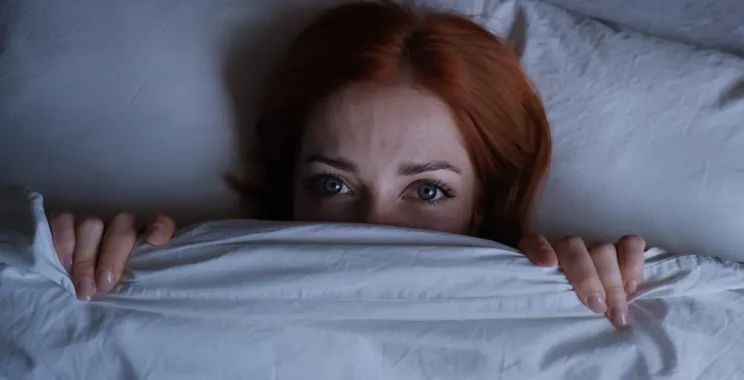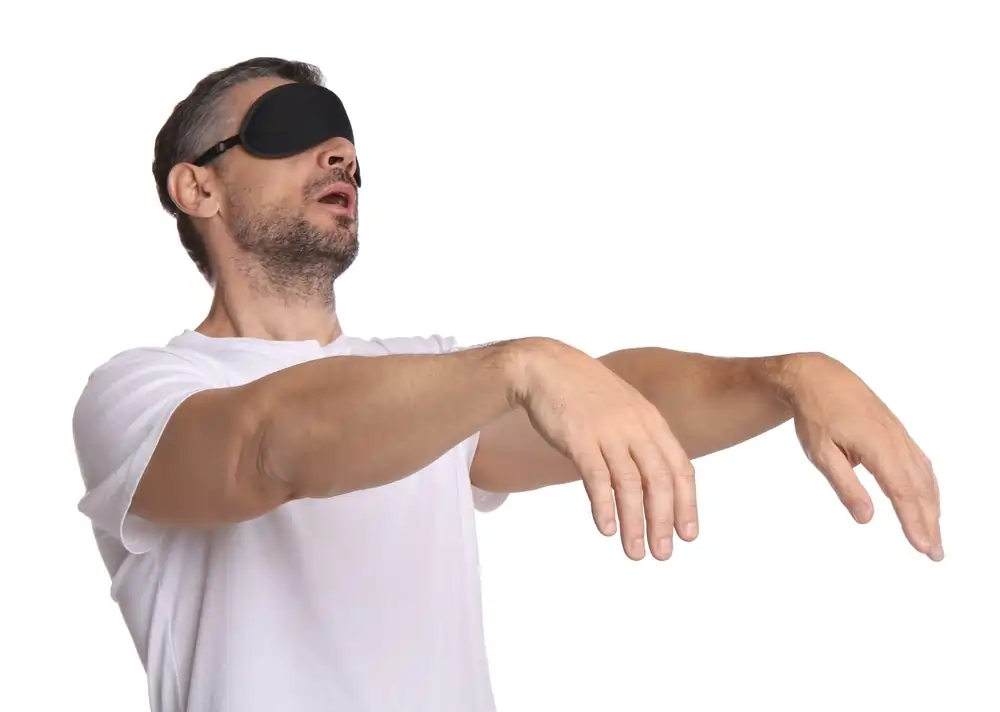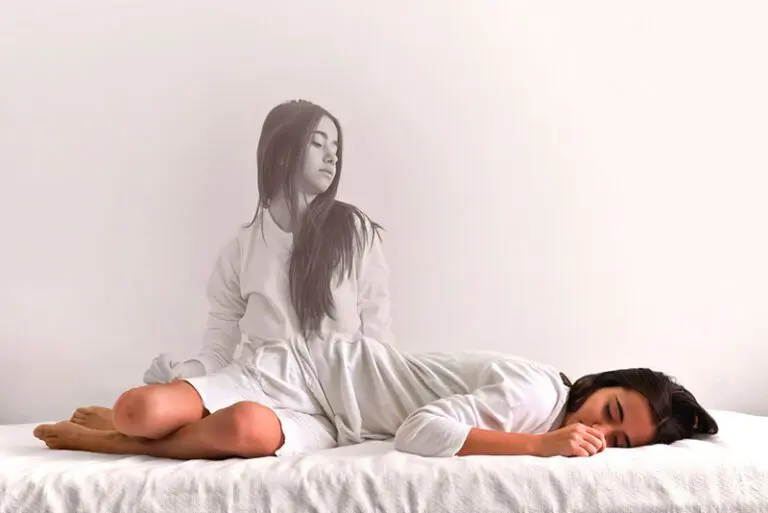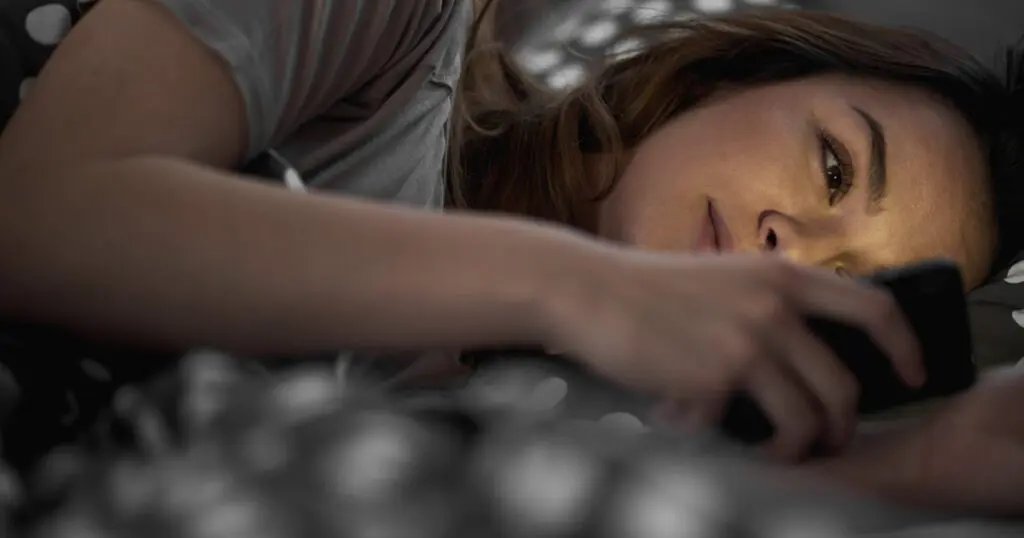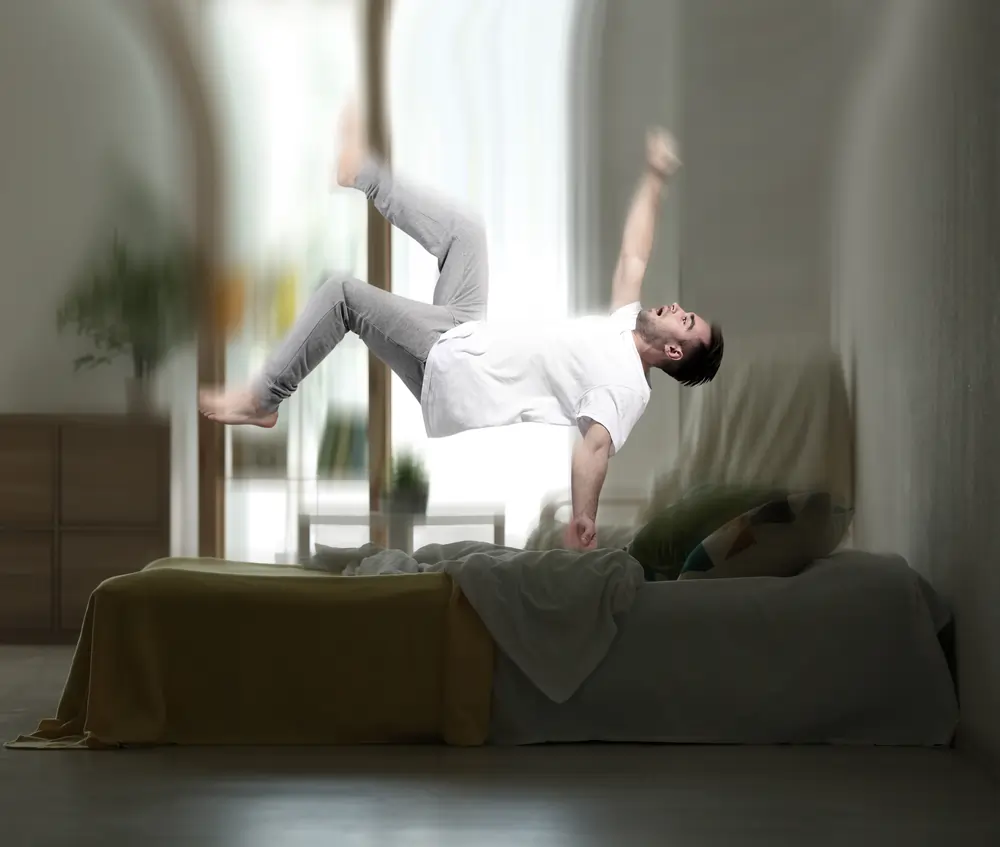Night Terrors In Adults – When a child experiences sleep disturbances such as night terrors, people consider it a part of their childhood. However, when adults go through chronic night terrors, many find it absurd. Contrary to popular belief, night terrors in adults are a serious condition that can lead to unwanted injuries and sudden deaths. In fact, according to the American Academy of Sleep Medicine, night terrors plague approximately 2.2 percent of the adult population. Are your night terrors becoming overwhelming and unmanageable? Is the quality of your sleep affecting your everyday life, as well as people around you? If so, read more to find out how you can correctly identify and prevent night terrors in adults.
Night Terrors In Adults – Understanding This Sleep Disorder
Share
Fact checked
Reviewed by experts
Updated
December 5, 2022
Quick read
5 mins to read
List of Content
What Are Night Terrors
Night terrors in adults are a type of sleep disorder where a child or adult suddenly wakes up screaming, flailing their arms, and sweating in crippling fear. This nocturnal episode also prevents children from regaining back their full consciousness. Unlike nightmares where a child is fully awake from a bad dream, night terrors can make a person go through an episode without fully waking up. It does not occur during the REM sleep; therefore, the afflicted person will not have a recollection of the sleep disturbance. Night terrors are a rare sleep complication that, to this day, remains a medical mystery to most sleep specialists. It is known by many names including sleep terrors, pavor nocturnes or, according to the DSM’s code, AXIS I: 307.46. It is also a type of NREM parasomnia which is a sleep disorder category consisting of abnormal sleep patterns such as sleep eating, nightmares, sleepwalking, and sexsomnia. All of these disorders occur in the deepest stage of non-REM sleep. Childhood night terrors are very common, but severe adult night terrors can also occur. A single parasomnia disorder episode can last between 30 seconds and 30 minutes, but it can even last longer than that. It generally happens during the first half of falling asleep to stage 4 of the NREM sleep and very rarely during children naps. An estimate of about forty percent of children suffers from nightmares and night terrors, and a smaller percentage in adults.
Night Terrors In Children
Child night terrors usually occur when there is a significant shift in a child’s life namely taking a new medication, overtired or feverish, stress, fear, or when they are away from home. Genetics also play a major role in night terrors children. Approximately three to six percent of children aging between four to eleven years old experience sleep terrors, eighty percent of which inherited the sleep disorder symptoms from their parents. Also, contrary to popular belief that children will outgrow the night terrors and nightmares, a child who experiences them can suffer from it until adulthood.
Night Terrors vs Nightmares
Night terrors or night frights can sometimes be misdiagnosed as nightmares, despite the two being complete opposites. When a child is having nightmares, he or she can easily be woken up. On the other hand, children who are plagued with night terrors can continue to experience the symptoms for as long as twenty minutes while still asleep. Also, night terrors occur during the NREM stage of sleep while nightmares happen during the REM stage. Unlike nightmares where frightening dreams occur, both children and adults who struggle from night terrors sleep do not dream at all. The episodes happen more routinely compared to horrors which are often random. With nightmares, you can quickly wake up from sleep. With night terrors and sleepwalking, however, your whole body is paralyzed with irrational fear, extreme stress, and rapid heart, all the while worsening with screaming.
Causes of Night Terrors
Night terrors in adults happen in very random times, but if it does, it is usually a sign of a wide range of factors and underlying health problems.
Psychological disorders
People with psychiatric disorders have a higher chance of experiencing night terrors during sleep than those who don’t. That is because, according to studies, night terrors have a close association with mental disorders and psychopathology. If you or your child has post-traumatic stress disorder (PTSD) or generalized anxiety disorder (GAD), the occurrence of night terrors is high. Personality disorders such as schizophrenia and bipolar disorder can also cause night terrors in adults. Depression, anxiety, and stress are two of the top origins of psychological disorders. So, it’s not a surprise why they are also catalysts for sleep terrors in a child. When a child is stressed during the day, they tend to manifest the post-traumatic stress in their sleep. Post-traumatic stress disorder (PTSD) also causes nightmares in a child. According to a study, bullied children are more than twice likely to experience stress which, in turn, translates into bad dreams and sleep terrors. Reducing stress in children is known to lessen the duration of a single night terror episode.
Medications
Drugs such as antidepressants and narcotics contribute to the frequency of sleep terrors. Other non-psychological medications such as high blood pressure pills can also cause a post-traumatic stress awakening, while withdrawal from tranquilizers can mess up sleep habits and trigger the nightmares.
Sleep disorders
Sleep disorders such as sleep apnea, restless leg syndrome, and insomnia can be a possible cause of night terrors adults. Since sleep apnea can trigger the brain to be overactive, it magnifies the occurrence of a dream, leading to longer night terrors adults. Sleep deprivation can also increase your risks of lengthening an episode.
How To Stop Night Terrors In Adults
A big majority of the parasomnia disorder types, including night terrors in adults, take place just before the deepest phase of sleep. That is why, in preventing night terrors, it is crucial to maintain a healthy and balanced sleep schedule for your child to achieve a more restful, nightmare-free sleep for the eyes. Simple steps such as limiting caffeine intake and consistent bedtime habits are just as beneficial as medications for night terrors.
Medications
Antidepressants and pain relievers are what a doctor will most likely prescribe you when you get yourself diagnosed with night terrors. These medications include Tofranil, Klonopin, and Valium – all of which induce sleep. If you want to avoid psychotropic drugs, you can also ask your doctor for other more natural options. St. John’s Wort’s, a popular herbal medication known to reduce symptoms of anxiety and depression, is an all-natural alternative you can use in preventing a night terror episode.
Warm bath and essential oils
Aromatherapy is scientifically proven to improve sleep quality in both children and adults. Before going to bed, you or your child can take a warm bath filled with sleep-inducing essential oils such as frankincense, vanilla, and lavender oil. The oils will help your child relax and have better sleep quality.
Exercise
Regular exercise can effectively reduce stress and anxiety, both of which are roots of night terrors in adults. It is not only beneficial to you but also to your child. Doing aerobic exercises such as running, swimming, and riding a bike can help you get rid of night terrors and create a stronger bond with your child. Yoga is also known to reduce insomnia and effectively get rid of stress in children before bed.
Feeling of security
In general, night terrors can disappear without the need for treatment. The goal is to make your child feel safe and secured during and after night terrors. You can do this by repeating reassuring remarks to your child at the time of an augmented reality episode and providing physical help through comforting hugs. And, although it may sound counterintuitive, it is not advisable to wake your child up from sleep in the middle of night terrors.
Is this article helpful?
Disclaimer
This website does not offer medical advice nor professional medical services; rather, it is provided solely for educational, informational, and/or entertainment purposes. Individuals seeking medical advice should consult a licensed physician. The information provided should not be used for diagnosis or treatment of any condition, disease, or injury. When you have a medical condition, you should always talk to licensed doctor or other certified medical professional. You should never delay seeking professional medical advice or treatment based on the contents of this website. Call 911 or immediately go to the nearest emergency room if you think you may have a medical emergency. The contents of this website are provided “as-is”, Sleep Authority and its parent, subsidiaries, affiliates, employees, contributors disclaim any warranty of the information contained herein. Please contact using contact form to report any errors, omissions, misinformation, or abuse.
